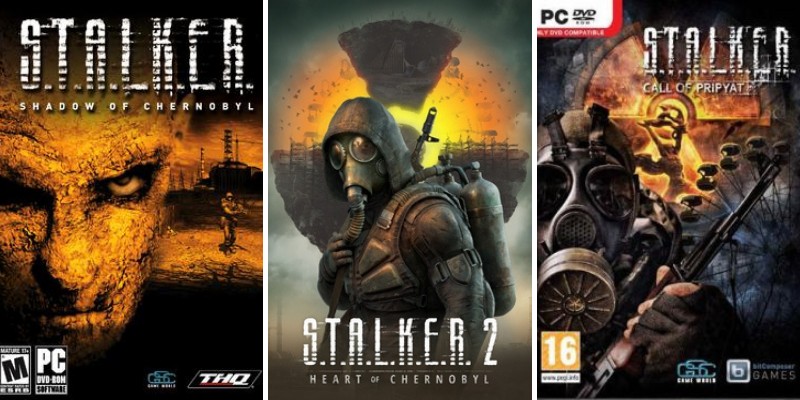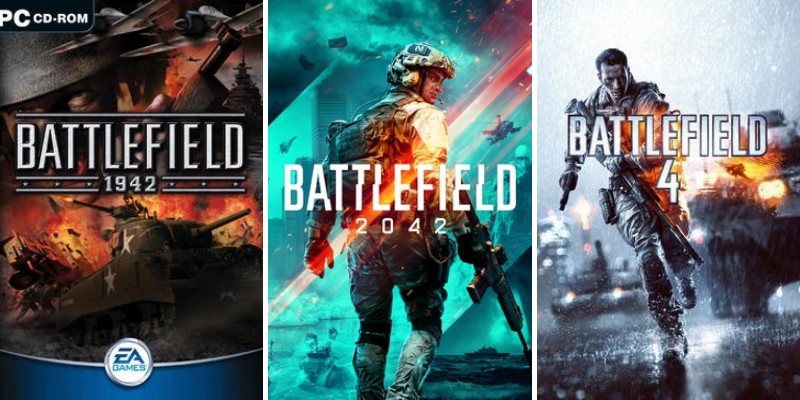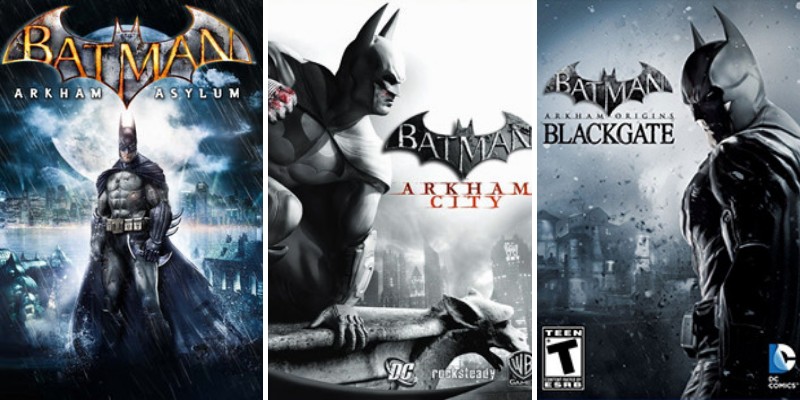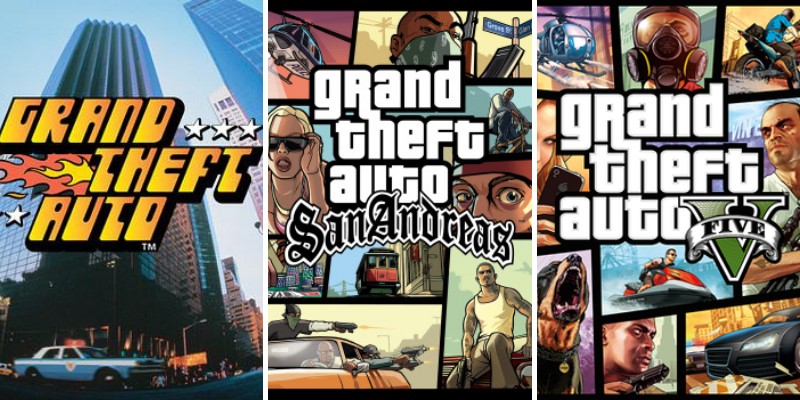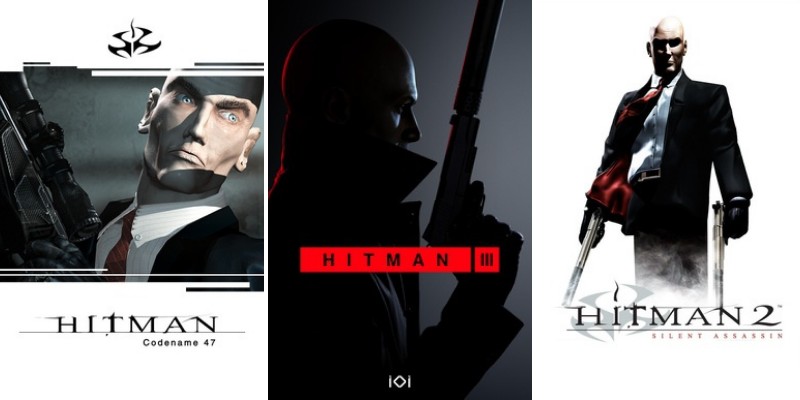Halo did what very few games have done in the past. It is a series that not only helped to define a console, but it largely helped to redefine what it meant for a shooter to be developed on consoles.
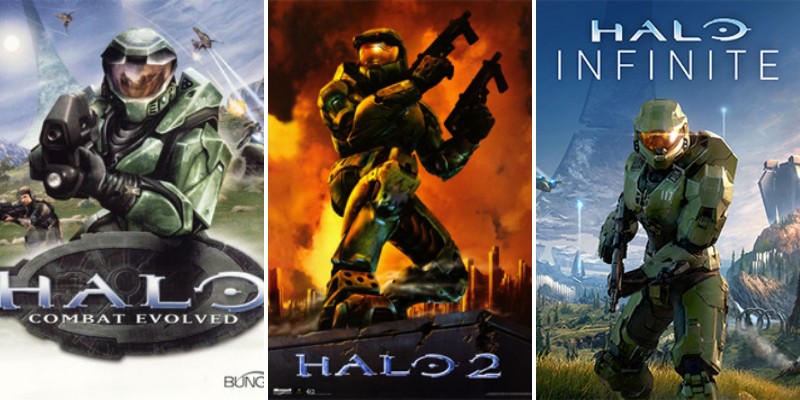
A long-runner that’s seen more games than many might imagine, the series continues to be one of the hottest Xbox properties.
In this post we will list and describe all Halo Video Games from the first edition up the latest one at the time of this writing, so let’s see them below:
Halo: Combat Evolved (2001)
To say that Halo: Combat Evolved’s success came out of nowhere is something of an understatement. Released for Microsoft’s first Xbox early on in the console’s life, it seemed like the game could have easily become another forgotten title.
The game’s memorable design and incredibly popular multiplayer modes, helped to elevate to Xbox’s most prominent first-party title.
The first Halo game put players in the shoes of Master Chief Petty Officer John-117, the super-soldier now popularly known as Master Chief.
Fleeing from a battle with the Covenant, Chief’s starship discovers the uncharted ring planet that would become known as Halo and encounters an incredible threat that would put humanity’s current war to shame.
An astonishingly well-made console shooter for 2001, the game was an instant success.
Halo 2 (2004)
While Combat Evolved was the dark horse success that no one saw coming, Halo 2 was the much-anticipated follow-up for which everyone in the gaming world was waiting.
An incredibly commercial and critical success that is often lauded as not only one of the best Halo games but one of the best shooters of all time, Halo 2 laid the groundwork for the future of the series.
While the first Halo game took place entirely on an alien world, Halo 2 brought the fight back to Earth. Though the game would once again see Master Chief facing off against the Covenant and the Flood, the game would shine a light on the inner workings of the former and even bring in the Covenant’s Arbiter as a second protagonist.
Known as much for its sudden ending as anything else in the plot, a huge part of the game’s success came from the fact that it shipped with online multiplayer – a feat that was something of a novelty back in 2004.
Halo 3 (2007)
With an advertising tag line that encouraged players to ‘Finish the Fight’, Halo 3 was the story that was intended to bring Master Chief’s saga to a close.
A highly-anticipated game that debuted on the Xbox 360, everything about this game was meant to be bigger and better. Not only would the game get a massive overhaul in terms of graphical fidelity, but the much-loved multiplayer mode would get a refresh to help bring it in line with the type of online play that Halo had pioneered.
A direct sequel to Halo 2, Halo 3 picks up just after the second game left off. The sequel directs John-117 not only against the remaining Covenant forces, but also against the heart of the Flood itself.
Touching on themes of sacrifice and redemption, this game narratively brought Master Chief’s first set of stories to a close.
Halo Wars (2009)
One of the most interesting things about the original Halo games is that players only got brief glimpses of the universe. Master Chief was just one of many soldiers and there was always enough going on in the background that it was clear that he was part of a broader war effort.
Halo Wars allowed players to take more of a bird’s eye view of the war between Earth and the Covenant, putting them in charge of actual armies as they fought through an original campaign.
Halo Wars was a rare real time strategy game that was actually built with video game consoles in mind. Relatively easy to control even though it still relied on complex tactics and production orders, players took control of the ground forces of the UNSC and got to command a host of the vehicles that had only been glimpsed during the main games.
A moderate success, the game proved that interest for anything with the Halo name was still strong.
Halo 3: ODST (2009)
While Halo 3 brought the story of Master Chief to a close for the time being that wasn’t the only story to be told in that world.
Bungie’s series had long been populated by significantly more human soldiers that the heroic Master Chief, and Bungie used the success of their third game to develop the expansion/side-story of a group of talented but all-too-human soldiers who found themselves fighting the Covenant on Earth.
Halo 3: ODST puts players in the role of several members of the titular ODST team, a human special forces unit that was sometimes seen fighting beside Master Chief.
Taking place during the siege of Earth, this game helped to give players a better look at how the war impacted the people of Earth and made a compelling case for just how strong the Covenant forces were against average humans.
Halo: Reach (2010)
Halo: Reach was both a beginning and an end for the Halo franchise. From a story point, this game took players back to the days that led up to Combat Evolved, allowing players to finally experience the Fall of Reach for themselves.
In the real world, though, players were given a chance to experience one last adventure from Bungie before the franchise moved from its original studios to Microsoft itself.
Reach saw players take on the role of Noble 6, a Spartan soldier stationed on Reach. As the story moved forward, players saw not only the full invasion of the planet but all of the doomed attempted to save as much of the population as possible.
A poignant story that helped underline the stakes of the original game, it was also notable for its incorporation of an incredibly deep online mode.
Halo: Combat Evolved Anniversary (2011)
Given the popularity of the Halo franchise, it was a given that Bungie’s last entry in the series wouldn’t be the last time people saw the world of Halo.
What surprised many, though, was that the next move wasn’t to put out a sequel but rather the revisit of the first game. A solid outing by 343 Studios, Anniversary gave those who had never had a chance to play the first Halo game a good look at what made the franchise so special.
Anniversary was a true remaster of the original Halo: Combat Evolved. Rather than adding anything to the original game, this iteration simply updated the game to look more in line with modern Xbox 360 games.
This means that all of the graphics in the game got a significant refresh and that all of the cutscenes were remastered.
Perhaps the most surprising thing about the game, though, was that it all ran on top of the original Halo – a press of a button would return the game to its original design.
Halo 4 (2012)
Halo 4 represented a huge risk in the franchise’s history. The first real solo effort by 343 Studios, it was a game that would both have to re-establish Halo as a major franchise on the Xbox 360 and that would have to show that the studio could carry the weight of the series’ legacy.
Though not nearly as well received as the previous games, Halo 4 managed to stick the landing by combining a solid understanding of what made Halo work while still adding some new pieces to the puzzle.
The campaign itself is probably the most divisive part of Halo 4. A story largely based on the Forerunners and some of the deeper lore about AI in the game, players once again take on the role of Master Chief as he battles against an alien menace.
The plot is definitely more convoluted than the original games, though, and the new Spartan Ops mode does little to help the story itself. Still, the strong multiplayer and the next-gen graphics of the game did help it to become a success.
Halo: Spartan Assault (2013)
Halo is a universe with more than enough room in it to explore many genres. Though the bulk of the games in the series have been first-person shooters, there have been a few experiments that have yielded other types of games.
One of the most surprising is likely Halo: Spartan Assault, a twin-stick shooter that was initially meant to be a ‘killer app’ for Windows phones and for Windows 8.
Taking place between the third and fourth games, player were placed into high-energy combat situations while controlling characters from Halo 4’s Spartan Ops.
With a fairly threadbare story, the game lived and died by its combat. While many praised it on PC, most didn’t particularly care for the mobile or console versions of the game and most pointed out how it felt a bit half-baked.
With that said, it was still commercially successful enough to prove that the decade-plus old franchise had plenty of staying power left.
Halo: The Master Chief Collection (2014)
There’s no denying that Halo is Microsoft’s flagship franchise. With a gap in development between Halo 4 and 5, though, 343 Industries was left without a game that could show off the power of the then-new Xbox One.
Building off the success of Halo: Combat Evolved Anniversary, the studio decided to create a new bundle of games that would not only update Halo 2, but that would include all of Master Chief’s adventures up to that point.
Originally launched with Halo: CE Anniversary, Halo 2 Anniversary, Halo 3 and Halo 4, the Master Chief Collection was a love letter to the franchise.
Though its multiplayer mode was unfortunately buggy and many of the changes to the older game weren’t all that well-received, many players still appreciated the ability to play all of the previous games in the franchise on one console.
Later updates would give players the ability to play ODST and Spartan Ops through the Collection, making it a true one-stop shop for Halo.
Halo: Spartan Strike (2015)
Since Spartan Assault had been a bit of a dud, it wouldn’t have surprised most players if the twin-stick shooter franchise died then and there. A sequel was made, though, and while it did manage to solve most of the problems that players had with the original game it also managed to make a few missteps that kept it firmly in the bottom tier of Halo games.
Spartan Strike put players in the role of Spartan soldiers who were re-enacting famous battles, a move that helped to improve the mission variety in the new game.
What the game lacked, though, was a true multiplayer mode. This key part of the Halo franchise was missing, and with it much of the interest in the game.
Largely praised for being mechanically better than it predecessor, Spartan Assault was still mostly met with mediocre reviews.
Halo 5: Guardians (2015)
Released a little later than anticipated, Halo 5: Guardians was meant to do quite a bit for the franchise. It was not only meant to re-establish Halo as the go-to franchise for Microsoft and to show off the power of the Xbox One, but it was also meant to reinvigorate interest in a franchise that was beginning to cool off.
Guardians would have big shoes to fill, but the final result wasn’t what everyone had hoped for.
A dual story that put players in the shoes of Master Chief and Jameson Locke, a Spartan-IV super soldier. The game once again has the UNSC facing off against not only the Covenant but also the Forerunner constructs encountered in Halo 4.
Most praised the story for being fairly compelling, though the ending was widely derided and most hoped for more from the game.
Surprisingly, though, the multiplayer aspects of Halo 5 failed to catch on in an era when the pioneering moves made by the franchise had been copied and iterated upon by dozens of other games.
Halo Wars 2 (2017)
With Halo 5 not quite performing as many had hoped, the future of Halo was in question. Spin-offs would have to take up the mantle for the time being, especially as 343 worked on ways to really improve the mainline series. One of the more impressive additions to the new Halo canon would be Halo Wars 2.
Taking place almost three decades after the first Halo Wars, Halo Wars 2 was a fairly well-regarded game on the consoles. It featured better controls, though the AI of the game was widely panned for being sub-par.
It was generally seen as a good return to form for the Wars sub-series and a good way to keep the game series alive as players anxiously waited for a new main entry.
Halo Recruit (2017)
Halo: Recruit isn’t so much a game as an experience. A way for Microsoft to both re-introduce players to the world of Halo and to show off its new VR technology, the five-minute long teaser allows players a chance to get closer to the world of Master Chief.
Less a real play experience and more of an extended trailer, this game nonetheless helped to show that Halo really had the ability to be adapted into modes beyond its first-person-shooter roots.
Halo: Fireteam Raven (2018)
While arcades might not be the place where hot new games debut in the 21st century, that doesn’t mean they are dead. As such, the presence of a true Halo arcade machine is both a pleasant surprise and one that makes a lot of sense.
Eschewing all of the lore and story of the Halo universe, Fireteam Raven exists as an entertaining romp through the greater world of Halo as seen through the arcade lens.
A co-op shooter that allows up to four players to take on the role of the titular Fireteam Raven, the game is a true arcade experience.
Enemies come at players quickly and without remorse, with perfect reflexes being needed by the whole team to win the game. It’s not a long experience nor is it particularly deep, but it’s hard to call this game anything but fun.
Halo Infinite (2021)
Originally meant to be an Xbox Series X Day One game, Halo Infinite has suffered delay after delay. With multiplayer finally getting a much-needed Beta and more information slowly leaking into the wild, though, players are once against getting ready to take on the role of Master Chief. Though it’s hard to tell exactly what the story will be or what players can expect in terms of game play experience.
Image Credits
By GameTab, (OTN), Link
By Allposters, Link
Wikipedia Link
